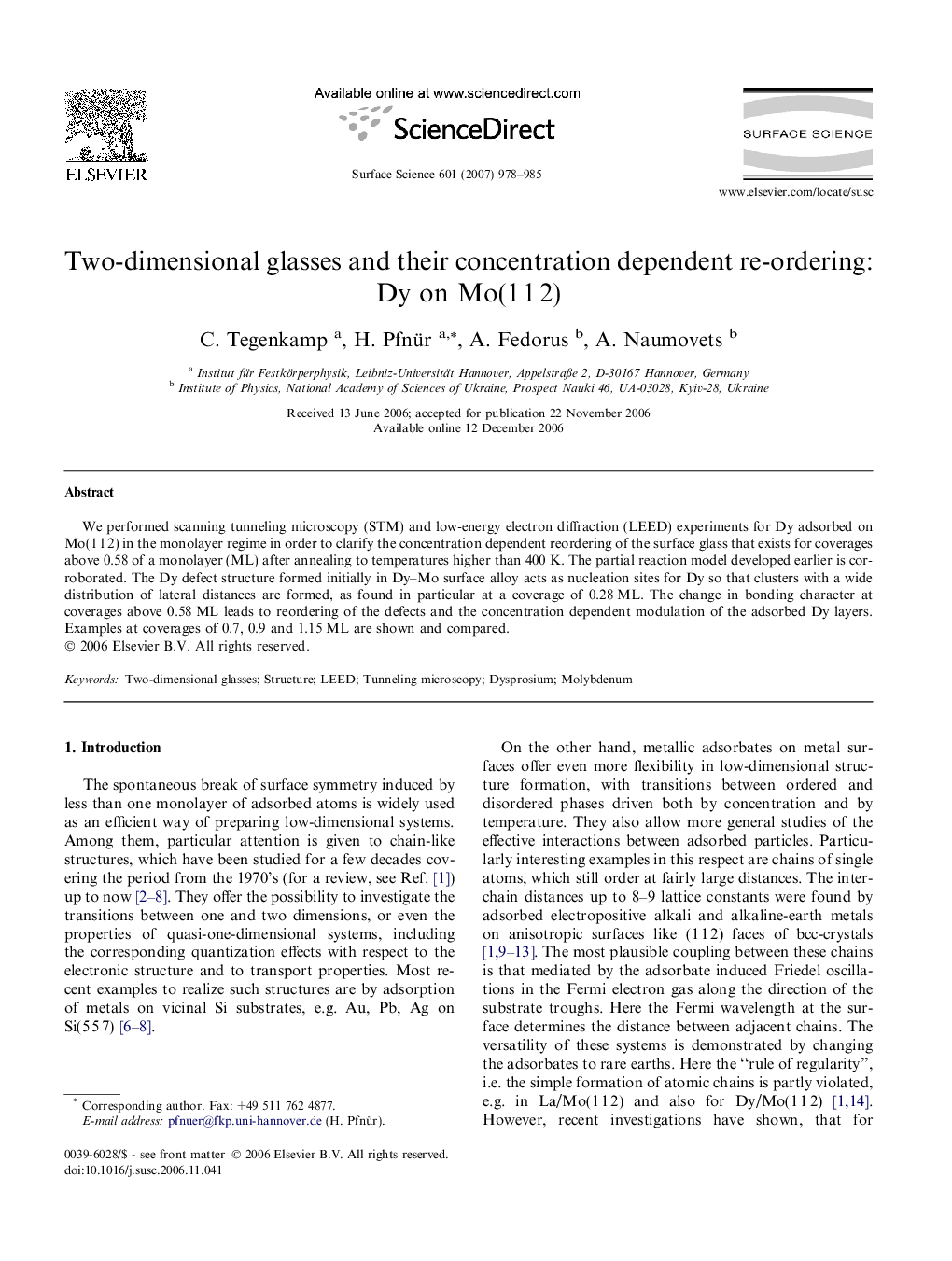| Article ID | Journal | Published Year | Pages | File Type |
|---|---|---|---|---|
| 5425203 | Surface Science | 2007 | 8 Pages |
Abstract
We performed scanning tunneling microscopy (STM) and low-energy electron diffraction (LEED) experiments for Dy adsorbed on Mo(1Â 1Â 2) in the monolayer regime in order to clarify the concentration dependent reordering of the surface glass that exists for coverages above 0.58 of a monolayer (ML) after annealing to temperatures higher than 400Â K. The partial reaction model developed earlier is corroborated. The Dy defect structure formed initially in Dy-Mo surface alloy acts as nucleation sites for Dy so that clusters with a wide distribution of lateral distances are formed, as found in particular at a coverage of 0.28Â ML. The change in bonding character at coverages above 0.58Â ML leads to reordering of the defects and the concentration dependent modulation of the adsorbed Dy layers. Examples at coverages of 0.7, 0.9 and 1.15Â ML are shown and compared.
Related Topics
Physical Sciences and Engineering
Chemistry
Physical and Theoretical Chemistry
Authors
C. Tegenkamp, H. Pfnür, A. Fedorus, A. Naumovets,
